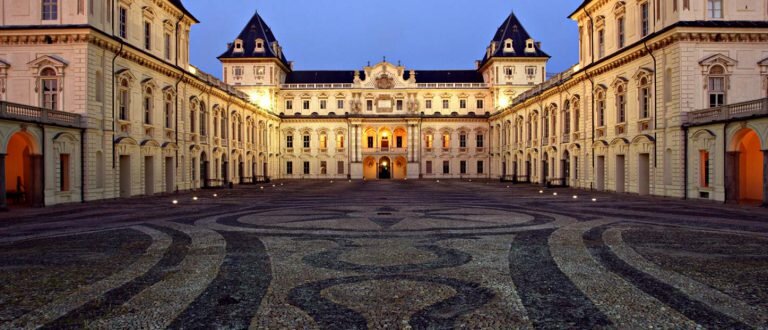Live Online Workshops
Tuesday, February 16th, 2021 – Scheduled from 3.30pm to 4.30pm UTC+1
Cost-benefit analysis based on socio-economic factors for the evaluation of filters performance
Organizers: TEBE-IEEM Research Group (Department of Energy of Politecnico di Torino) in collaboration with RHOSS
Cristina Becchio: graduated in Architecture and Ph.D. in Technological Innovation for Built Environment, is currently Assistant Professor at the Energy Department of the Politecnico di Torino. She works in the TEBE-IEEM Research Group focusing on energy and buildings.
Stefano Corgnati: Master Degree in Mechanical Engineering, Ph.D. in Energetics, he is Full Professor in “Building Physics and Building Services” at the Energy Department of Politecnico di Torino, where he is vice-Rector for Research. He is Past-President of REHVA (Federation of HVAC European Associations). He works in the TEBE Research Group leading the subunit IEEM – Indoor Environment & Energy Modelling.
Micaela Ranieri: Master Degree in Management Engineering, she is Air Handling Unit Manager at Rhoss S.p.a., a Company specialised for more than 50 years in the design and manufacture of products and systems for air conditioning and air handling.
Abstract
The revised Energy Performance of Building Directive of 2018 stressed the importance to improve the quality of life, health and performance of building occupant, and introduced the Smart Readiness Indicator, the calculation of which is based on eight impact criteria. Two of these criteria, indeed, are comfort and health. In this scenario, it is essential to take into account not only the improvement of building energy efficiency but also the indoor environmental quality and the interaction between the building, its systems and the occupant. Consequently, the new subject of the scientific investigation is the building-system-occupant complex. Considering the occupant-centred investigation, energy, financial, environmental and socio-economic impacts become the drivers of the decision-making process. As a result, new evaluation methods are necessary in order to assess energy investment projects. The workshop deals with the mentioned topics and it is illustrated an application of one of these methodologies, the cost-benefit analysis, for the evaluation of an innovative technology in the air treatment.
Wednesday, February 17th, 2021 – Scheduled from 10.30am to 11.30am UTC+1
Some technical contributions to Covid-19 pandemic mitigation
Chair: Marco Carlo Masoero (Department of Energy, Politecnico di Torino) Professor in the Department of Energy at Politecnico di Torino, and former Department Head. His teaching, research and consulting activities are focused on HVAC systems, refrigeration, energy efficiency in industry and buildings, applied acoustics and sound engineering. He is delegate of the Rector for the relations with professional associations, and Artistic Director of the concert season ”Polincontri Classica”.
“A calculation tool for infection management in mechanical ventilated buildings“
Livio Mazzarella: (Department of Energy, Politecnico di Milano) Mechanical Engineer, Professor of Building Physics and Building Energy Systems at the Department of Energy of Politecnico di Milano. Past president of Building Engineering BSc and MSc curricula. REHVA Fellow and Chairman of Italian Standardization Technical Committee on HVAC&R.
Abstract
COVID-19 pandemic is today an unresolved medical problem and any possible measure that may lower SARS-CoV2 virus propagation has to be applied. If airborne viral emission and diffusion are assumed to be important, there are several design and operational measures that can be undertaken for reducing the airborne infection risk in closed spaces as buildings as ventilation, reduced air recirculation and masks wearing. Effects on virus spread of all these measures are not easily quantifiable, but for some of them some simple modelling can help to understand their relative effectiveness. For this reason, a simplified tool has been developed to assess comparatively effectiveness and potential application of such of actions on both existing and new building and HVAC systems. The tool is based on the standard airborne disease transmission Wells-Riley model (i.e. quanta based and full mix hypothesis). It extends the usual single room model to a Multi-rooms Model with possible air recirculation among rooms, through centralised HVAC system and via air transfer to common service area (corridor, toilettes and staircases) where air extraction to outside is performed via dedicated exhaust air ductwork. The model is a dynamic model, i.e. the time dependent problem is solved.
“Bio-stopper: a short distance barrier to virus laden by bio-aerosol”
Marco Simonetti: (Department of Energy, Politecnico di Torino) Aerospace Engineer, Associate professor of Building Physics and Building Energy Systems at the Department of Energy, Politecnico di Torino. Responsible for the design and construction supervision of HVAC, sanitary and electrical plants for residences, offices, hospital and industrial buildings.
Abstract
Infected subjects emit viruses through bio-aerosol, transported in turbulent jets that origin from the mouth and the nose, during breathing, talking, coughing, and sneezing. At the human micro-environment scale (distance in the range <2m), in an indoor environment, the local direct airflows interaction between subjects is a prime contagion vector, while at longer distances the aerosol concentration becomes the most important factor. An effective dilution through ventilation or filtration is the key control action to reduce the average concentration of aerosol in a room, but the short distance contagion should be treated specifically. The Bio-stopper is a lightweight, simple-to-produce, simple-to-manage, eventually cheap system, device that generates air jets between people seated at table, deviating and entraining human emitted jet without interfering with normal actions of the subjects. Some prototypes of the Bio-stopper have been tested, by visualizing fluorescent aerosol emitted by a mannequin head and by measuring local aerosol concentrations with Optical Particle Counters. The results confirm a strong reduction of the aerosol potentially driven from an infected subject to a susceptible subject, seated and dining at table. A widely diffused industrialized device could help to reduce the risk of contagion in restaurants, offices, schools, operating at the short distance, and in combination with an effective ventilation.

The Bio-stopper, in the table center, will deviate back and block the aerosol jet emitted by the mannequin
“Assessing the performance of community face coverings”
Paolo Tronville: (Department of Energy, Politecnico di Torino) Associate professor at the Department of Energy, Politecnico di Torino where he manages the Aerosol Technology Lab. Chairman of CEN/TC 195 “Air filters for general air cleaning” (2006-current) and ISO/TC142 “Cleaning equipment for air and other gases” (2005-2016). He is an ASHRAE Fellow and Distinguished Lecturer.
Abstract
Current standards test methods to assess the performance of medical masks (EN 14683) and PPE for the respiratory tract (EN 149) prescribe complicated and lengthy test methods using measuring equipment hard to find on the market. The Bacterial Filtration Efficiency (EN 14683) takes at least two days to be measured, and it requires the use of the pathogenic Staphylococcus aureus. Moreover, the uncertainty of the reported data of these two standards is not clearly defined. We developed an innovative test method to measure the filtration performance of the “community masks.” This method provides a more useful and complete performance assessments, in a much shorter time, and providing data uncertainty. We compare the data obtained by testing the three categories of protective devices mentioned above (medical masks, PPE for the respiratory tract, and “community masks”).







